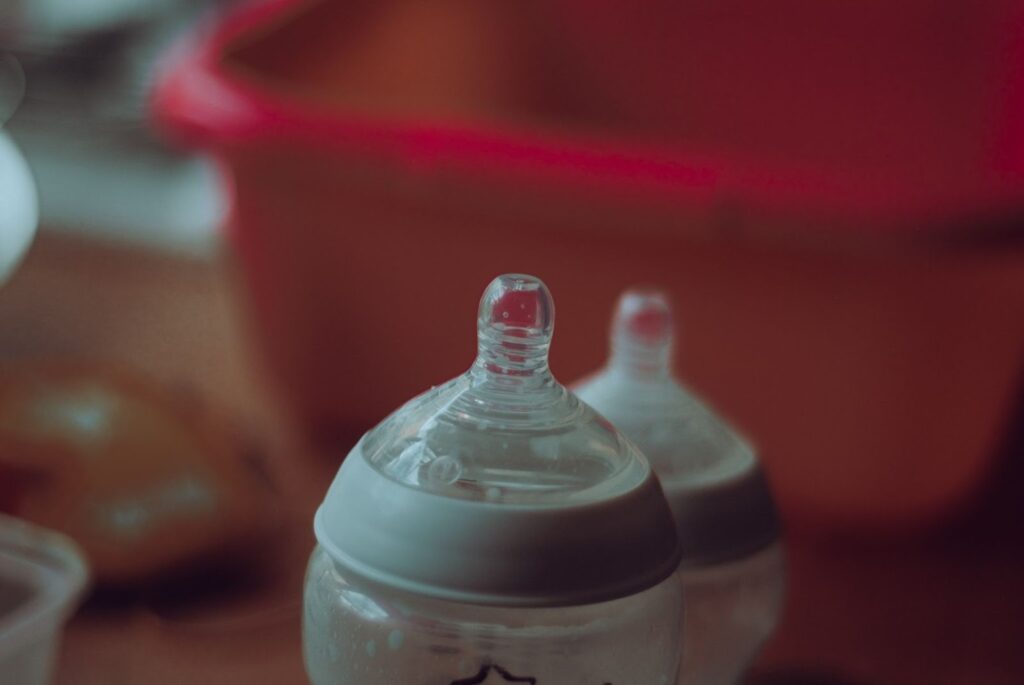Whether you are breastfeeding your baby, formula bottle feeding them after you visit Sell Formula, or even doing a bit of both, you will eventually need to bottle feed them. However, it is not always as easy as it seems, and those cute images of parents holding a bottle for their baby make it seem so simple.
However, it is a process, and there is a learning curve to it, so, today we will talk you through how you do this, so you are prepared and know just how to bottle feed your baby!

An Easy Beginners Guide To Bottle Feeding Your Baby
Making A Baby Bottle
We aren’t talking about the supposedly fun process of actually making a bottle, this is not a craft project, we are talking about how you should prep a baby’s bottle. When you’re sleep deprived, and learning a whole new skill the mere concept of making a baby bottle can seem haunting.
But it is not too hard, but it does depend on the type of formula you are feeding them. The CDC recommends that babies under 3 months have ready-to-feed formula, so keep this in mind.
Prepping a bottle of ready-to-feed formula
This type requires minimal prep. They actually come ready to be poured into a bottle that you can feed to your infant. Some will come in bottles that will even be able to accommodate disposable nipples, so you only need to screw the nipple on, feed, and then discard them.
Prepping a bottle of a concentrated formula
With this liquid formula, water needs to be added. The type of water depends on where you live, and what your pediatrician recommends. If you have safe tap water, you can use it but ensure you run it for a few minutes before you fill the bottle. You could also use bottled water, filtered water, or water that has been boiled and then cooled.
Prepping a bottle with powdered formula
Much like with concentrate formulas you need to follow directions of scoops to water ounces. When you use a powdered formula, you should also shake it so that the liquid is not clumpy.
In some cases, parents note that powdered formula can make their baby more gassy, constipated, or prone to spit up. This is often down to the preparation of the bottle. If you do not shake it enough then the consistency may be off, and it can be harder to digest for the baby.
Best Positions For Bottle Feeding
How you hold your baby when you bottle feed matters, your baby won’t be laying on your lap like some TV shows or adverts may make you think, so let’s go through this.
- The primary position would be to cradle the baby in your arms. Rest their rest in the crook of your arm while you hold their chest and head at a slight incline, close to you.
- You can also hold the baby upright, with their head on your chest or in the crook of your arm. Tilt the bottle, so the milk fills the nipple completely to avoid reflux or gassiness from gulping air.
- You can also make use of a nursing pillow to keep their head and chest upright, also giving your arm a break.
- It is also a good idea to switch sides, no matter if you breastfeed or bottle feed as it helps to rest your arms and prevents the baby from developing a preference to the side. Doing so during a feed also gives your baby a chance to decide whether they’re full before the bottle is finished.
Getting Your Baby To Take A Bottle
Some babies will take to the bottle well, but others do not. Here are some tips to make it easier.
- Even if breastfeeding, giving the baby a bottle a week will help to introduce the bottle, it becomes routine, and they’re less likely to be resistant.
- Offer a bottle between nursing sessions, if they’re too hungry they may be too worked up to take it.
- Allowing others to try it, get your partner to give it a try outside of normal feed time.
- If the baby does not take the bottle, just try again later. Do not force it.
- If all else fails, ask for help from a lactation consultant.
Overall
Getting your baby to take bottle feeding can be challenging, but it is doable. But, do not be afraid to ask for help if you are struggling, it can be challenging at first. Always ask your pediatrician for recommendations.
